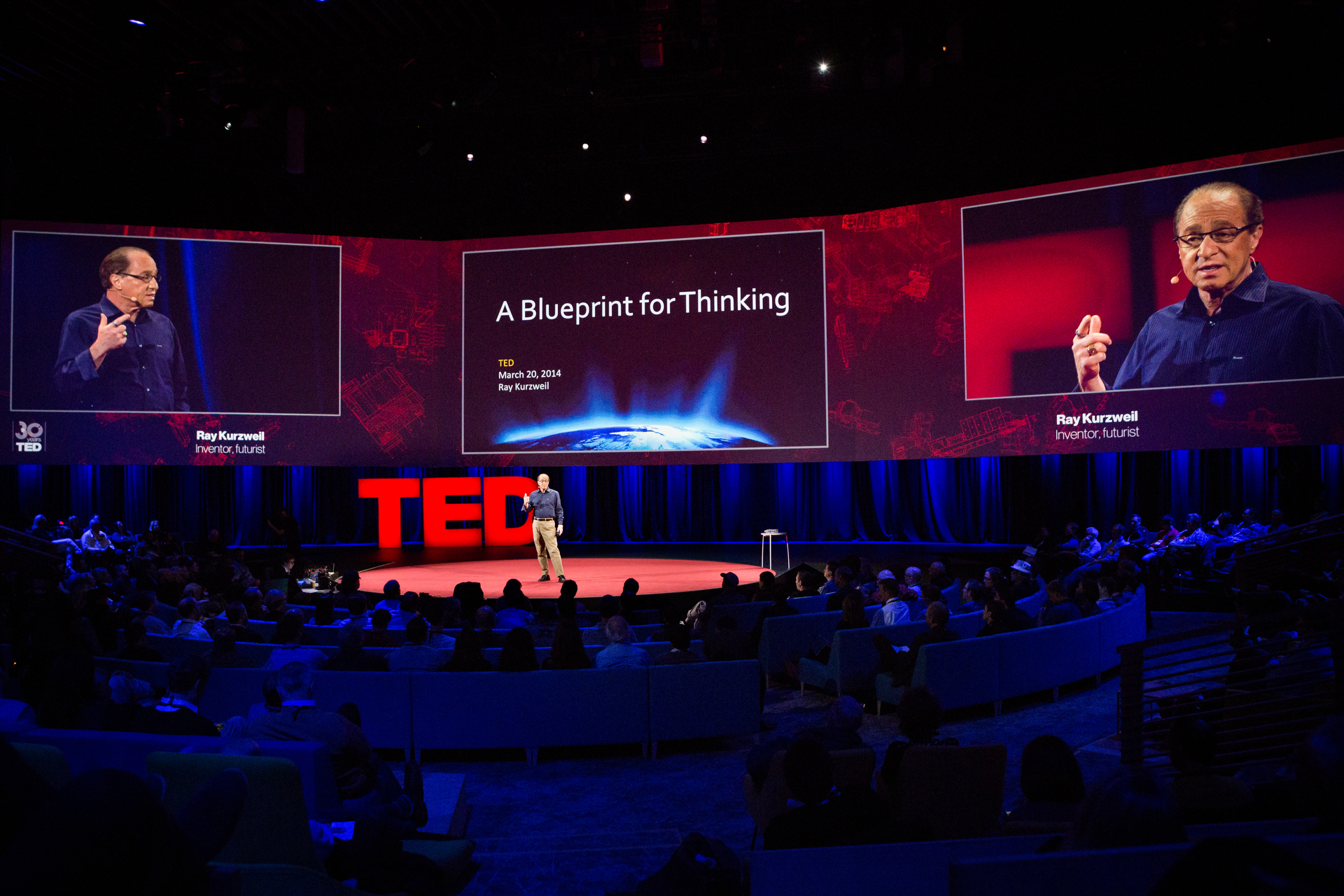Ray Kurzweil returns to the TED stage to explain his new (kind of old) theory of the mind. He first wrote his theory as a paper 50 years ago, but today there’s a plethora of new evidence to support it.
First, a refresher on the story of the neocortex, which means “new rind.” Two hundred million years ago the thin layer covering the brains of mice was as small as a postage stamp and just as thin – but it allowed for a new kind of thinking. Mammalian creatures who had neocortexes could invent new behaviors quickly and spread it to others. By contrast, non-mammalian creatures could only invent new behaviors after thousands of years of evolution.
Sixty-five million years ago when the Cretaceous Extinction Event wiped out the dinosaurs and 75 percent of animals and plants on Earth, “mammals overtook their ecological niche” and the neocortex got a lot bigger and grew its characteristic folds and ridges. Today it’s so big it constitutes 80 percent of the human brain.
According to Kurzweil’s new theory, the brain is made up of 300 million modules. Each one learns, recognizes and implements a pattern, and all the modules are arranged in hierarchies created by our own thinking. This is how it works: One module in your mind might recognize the crossbar in the capital letter A. Its job is to recognize that and only that crossbar. It sends signals of high probability to the next level, which recognizes “A,” and then to the next level, which recognizes the written word “Apple.” You might go up ten levels and get a level that recognizes irony; but while hierarchy structures vary in complexity, in fact individual modules don’t function differently on a basic level.
And here’s the kicker: Computers, says Kurzweil, are beginning to master human language with techniques similar to neocortex. In five to 10 years, he says, “search engines will be based on combinations of words and links but will actually read the billions of pages on the web for understanding.” For example, he says, while you’re on the Internet, something will pop up and say, “You expressed concern a few weeks ago about your gluten levels, and a new paper has just come out 10 seconds ago about it. Let me summarize it for you … .“ Kurzweil predicts that in 20 years nano-bots will enter the brain through capillaries to connect us to a synthetic neocortex in the cloud. So if someone walks past you whom you want to impress, but your 300 million modules aren’t enough to come up with something clever to say, all you need to do is tap into the neocortex in the cloud and another billion modules will become available. The future human, says Kurzweil, will be a biological and nonbiological hybrid.
Two million years ago when we developed large foreheads, it was a quantitative increase that led to a vast qualitative explosion – of art, culture and technology. In the next few decades, Kurzweil predicts, we’re going to do it again: And this time, “We won’t be limited by the fixed architecture of the enclosure. We will expand without limits.”

Comments (25)
Pingback: MIT All-Stars Shine at TED’s 30th
Pingback: Printing Bodyparts | epilepsy-mine
Pingback: Ray Kurzweil: Get ready for hybrid thinking – [TED Talks] | mostly music
Pingback: Idea Age is here: Part 2, Exponential Technology | Saravanan.Org
Pingback: TED BLOG Mind Mapping | Intelligent Web Services
Pingback: TED BLOG Mind Mapping | Internet Of Things
Pingback: TED BLOG Mind Mapping | Yottabytes 101
Pingback: TED BLOG Mind Mapping | Semantic Search Technology
Pingback: Michel Lévy-Provençal :
Pingback: Note-taking, doodles and sketches from TED2014 | BizBox B2B Social Site
Pingback: Note-taking, doodles and sketches from TED2014 | Cherry Wired
Pingback: What will blow our minds in the *next* 30 years? #TED2014 #Marketingthema | www.Marketing-Thema.com
Pingback: What will blow our minds in the *next* 30 years? | BizBox B2B Social Site
Pingback: What will blow our minds in the *next* 30 years? | jr
Pingback: What will blow our minds in the *next* 30 years? | Health & Wellness Chicago
Pingback: The hierarchy in your brain: Ray Kurzweil at TED2014 | NYC Startup News